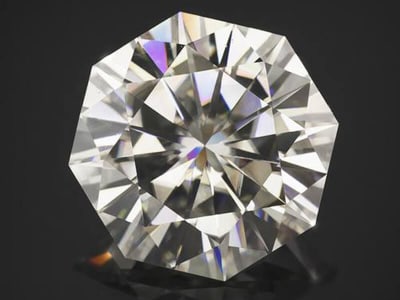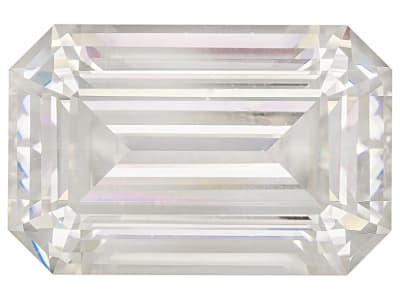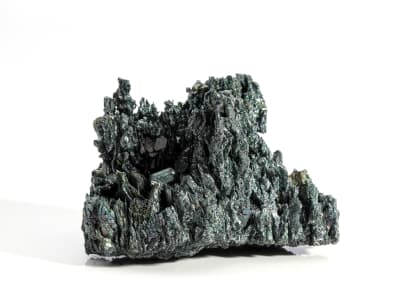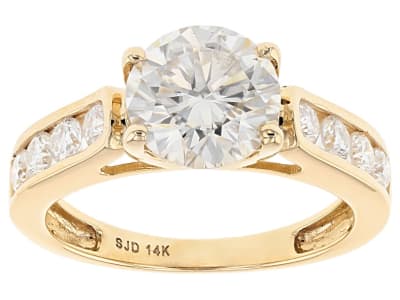The mineral moissanite was unknown to the general public until gemstone-quality material was synthesized and marketed as a diamond simulant. It is known in many industries in the form of synthetic carborundum. Natural moissanite was discovered in 1893 by Dr. F. Henri Moissan. Dr. Moissan was also the first person to synthesize moissanite, so it was named for his honor in 1905. All moissanite used in the jewelry industry is lab created. Lab created moissanite is commonly colorless, but it does come in red, yellow, orange, green, blue, purple, and pink. Lab created moissanite is extremely durable and has exceptional dispersion.
General Information
LWUV: Inert to weak orange or blue
Moissanite Colors
-
 Blue
Blue -
 Blue
Blue -
 Blue
Blue -
 Brown
Brown -
 Brown
Brown -
 Brown
Brown -
 Colorless
Colorless -
 Gray
Gray -
 Gray
Gray -
 Green
Green -
 Green
Green -
 Green
Green -
 Multi-color
Multi-color -
 Orange
Orange -
 Pink
Pink -
 Purple
Purple -
 Red
Red -
 White
White -
 Yellow
Yellow -
 Yellow
Yellow -
 Yellow
Yellow
Alternate Names
Synthetic Silicon Carbide, Carborundum
Countries of Origin
Russian Federation; Hungary; Czechia; United States of America; Egypt; Ukraine; Uzbekistan; Kazakhstan; Portugal; India; Azerbaijan; Canada; Austria; Turkey; Unknown; Norway; China; Brazil; Mexico; South Africa; Israel; Australia; Bulgaria; Tajikistan
History
Synthetic moissanite is a remarkable stone. It has more fire than a diamond and, because it's created in a lab, we can ensure that every stone is cut to optimize its brilliance. Lab-created moissanite is technically lab-created silicon carbide. It is grown in a lab under controlled conditions. What does this mean? You can enjoy a stone that is extremely resistant to scratching, chipping, and breaking. You can enjoy a stone that doesn't just sparkle, it dazzles. You can enjoy a stone whose fire is exceptional and whose luster is without equal. And you can do it affordably. With a Mohs hardness of 9.2, it's second only to a diamond in hardness. Its fire is superior.

More About Moissanite
Mineral moissanite was discovered in 1893 by the man for whom it is named, Henri Moissan. At first, he thought the crystals were diamonds. He later came to know they were not. Those first crystals were discovered at Canyon Diablo, Arizona, in a meteorite. Until the 1950s, no other naturally occurring moissanite was found. It's extremely rare to this day, which is part of why lab-created stones are such a wonderful addition to our jewelry collections.



